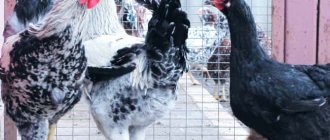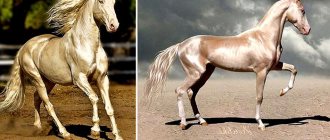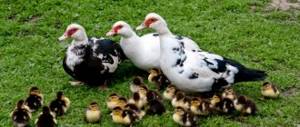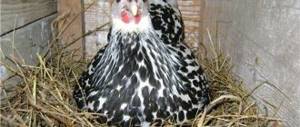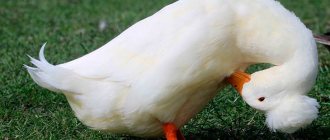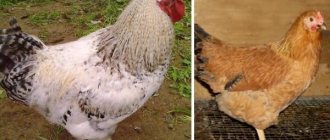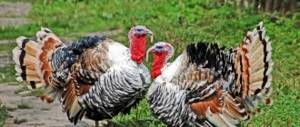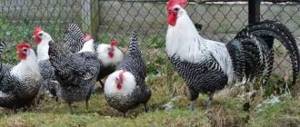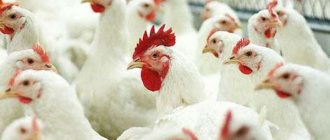History of the origin of the breed
The breed does not have a long history, since breeders bred chickens relatively recently. The exact year of creation is not determined, but it is known that it was about 40 years ago, although many other breeds of chickens were developed more than 100 years ago. Homeland - Hungary. Breeders sought to crossbreed a variety of chickens so that the result would be a productive hybrid with high egg production and excellent meat.
Scientists managed to achieve their goal; the Tetra chicken breed is unique. Laying hens very quickly gained well-deserved popularity and today they can be found in almost any country. Due to their unpretentiousness, they are bred even in miniature farms.
Appearance characteristics
There is nothing special in the appearance of the birds, but the main characteristics of the breed can be identified:
- rooster weight – 3 kg, laying hen 0.5 kg less;
- the skeletal structure is identical to other chickens, but the body is slightly longer;
- the head is small, the beak is strong, yellow in color, the crest is even and erect;
- Laying hens have a small belly, and roosters do not see it at all;
- the wings are medium in size and fit snugly to the body;
- The color of the rooster is most often reddish-red; the color of the hen is the same, but much paler.
Fast growing and very productive Tetra chicken breed
The wide variety of chicken breeds can surprise even the most experienced farmer. Over time, breeders develop more and more new breeds that can amaze farmers with their productivity. Poultry breeders especially praise chickens of the Tetra hybrid breed.
The Tetra chicken breed was obtained by Babolna TETRA, which breeds poultry in Hungary. For 40 years, specialists from this company have been working to create a bird capable of laying eggs equally well and gaining the required weight. Babolna TETRA specializes in growing hybrids with increased egg production. Tetra chickens belong to this breed.
Modern Tetra chickens perfectly combine the characteristics of egg-laying and meat breeds. The young quickly gain the required weight, mature rapidly, and also begin to lay eggs early.
Description of the Tetra breed
The head of birds of this breed is of medium size.
It has a small but strong beak of light yellow color. The comb is well developed in both roosters and hens. The shape of the comb is leaf-shaped, and the color is scarlet. The bird's head is of medium size and sits on a not very long neck. It smoothly turns into a rectangular body , at the end of which there is a small tail. Chickens and roosters have vertical feathers on their tails that support its shape. In relation to the body, the bird's legs seem average, not very long. They are painted light yellow, almost white.
The bird's wings are medium-sized and fit snugly to the chicken's body. The belly of laying hens is more pronounced and also has a rounded shape. Roosters have a flatter stomach and a high chest. The eyes of Tetra chickens are almost always orange.
Peculiarities
Tetra chickens have excellent egg production. During the first year of production, a laying hen can produce from 230 to 250 large eggs. This is an undoubted advantage for farmers who strive to obtain the maximum number of eggs in the shortest possible time. In addition, Tetra hens begin laying eggs relatively early - immediately after reaching the age of 21 weeks.
Description of Tetra chickens
Despite their compact build, laying hens amaze many poultry houses with their productive indicators; sometimes even the largest purebred hens cannot boast of this.
Meat characteristics
In addition to high productivity, Tetra chicken breeds tend to have tasty and dietary meat. This feature makes the product a participant in many culinary masterpieces. Since the birds reach the required weight very quickly, poultry farmers make a profit literally instantly. Laying hens are muscular, and the meat has a fine-fiber structure.
All components contained in the product are perfectly absorbed by the body; some elements speed up the digestion process of food. The amount of fat in the meat is about 10%, and the protein is much higher than that of other chickens. Therefore, this product is considered an excellent source of useful elements that are especially necessary for children.
In addition, meat contains vitamin B6, popularly called a natural antidepressant; its amount in Tetra is greater than in peanuts, beans, broccoli, etc. Chicken meat helps improve metabolism, strengthens the immune system, and helps avoid stroke and heart attack.
Productivity and weight gain
Young animals of the Tetra breed grow very quickly; of course, they are significantly inferior to broilers, but at the age of 3 months the weight is about 1.6 kg. By the age of 4.5 months – more than 2 kg. Naturally, over time the weight increases.
Character
The birds have a peaceful, friendly disposition and do not cause discontent from poultry farmers. Not particularly active, a little clumsy, peaceful. Males do not get into fights and behave calmly. However, if one rooster begins to be attacked by another, the male will not stand aside. He will always protect himself and his hens.
There are also overly active pugnacious roosters; such individuals are immediately sent to slaughter or simply transplanted into another separate cage. Birds love fresh air, they love to explore territories unknown to them, and are always looking for new adventures. They are kind and sympathetic, do not fight with people, and easily make contact with them.
Despite the fact that birds love to discover new places, they will not fly over the fence on their own.
Sexual maturity and egg production
Poultry farmers love to have birds that lay eggs early and quickly reach sexual maturity. Chickens of the Tetra breed are classified as such birds. They lay their first clutch at the age of 4-5 months, although they fully mature later. At first, the mass of eggs is approximately 50 g, over time it becomes larger.
The hybrid breed is sometimes delayed in sexual development, but this happens very rarely. The reason is improper and inadequate nutrition of birds. It is worth paying attention to the fact that birds are prone to obesity; accordingly, excess weight provokes delayed laying and late puberty.
As for egg production, its indicators truly surprise poultry farmers. This small feathered laying hen is ready to bring about 300 eggs per year to its owners. The shell is light brown. Naturally, this is not the most record-breaking figure, but this number of eggs laid is high, especially considering the meat and egg direction of the chickens.
Hatching instinct
Almost all purebred chicken breeds have maternal instinct; hybrids and crosses are not endowed with it. Unfortunately, the Tetra chicken breed was no exception. Hungarian laying hens do not make good brood hens, except for some exceptional hens.
The bird will not sit in the nest and wait for the birth of its offspring, it simply will not sit in it. Some poultry farmers try to force laying hens to sit on eggs, but it all ends with the bird becoming nervous and further aggressive in its behavior. In this case, there is no need to despair, because the incubator always comes to the rescue. It will solve all the problems of the poultry farmer. Well, the features of incubating chicken eggs are described in this article.
In the incubator, the main thing is to set the temperature and humidity correctly, then healthy and strong chickens will emerge from the eggs in about 22 days.
If the breeder does not plan to breed birds on an industrial scale, then you can use a hen of another breed of chicken; she will happily sit with both her own eggs and those of others. In addition, you can simply buy young animals and not waste time on breeding them.
Breed overview
The Tetra chicken is a frequent resident of small farms. Farmers love this breed because it combines the characteristics of both egg and meat breeds. Young animals are characterized by rapid muscle mass gain and early egg laying. Therefore, growing and breeding this breed both in small farms and on an industrial scale is considered a profitable and promising business.
Origin
The Tetra breed was developed in Hungary approximately 40 years ago. The Babolna TETRA company has set itself the task of developing a hybrid with equally good egg and meat qualities. As a result of their work, the above-mentioned breed appeared, which became widespread in 28 countries around the world.
Appearance
Judging by the description most often found on the Internet, the Tetra chicken breed is not very different from its other relatives. It has a small head on which is located a strong beak of light yellow color. The comb is developed quite well in both roosters and hens, has a leaf-shaped shape and is scarlet in color. The head is located on a fairly long neck and smoothly transitions into a rectangular body. The tail is medium in size and has several supporting, vertically arranged feathers. The legs look proportional in relation to the body; they have a light white-yellow color.
The bird's wings fit tightly to the body and are also of medium size, the plumage is silky, predominantly brown in color. Laying hens have a fairly pronounced rounded belly, while cockerels have a more prominent, high-raised chest with a flat belly. Determining the gender of this breed is not difficult.
Hens and cockerels vary in plumage color. In laying hens it is fawn, in cockerels it is white. This is very convenient when forming the optimal composition of the livestock. The dimensions of the hybrid are somewhat larger than those of classic laying hens. At the age of 18 weeks, the bird's weight is about 1.45-1.55 kg, an adult chicken weighs about 2.5 kg.
Productive qualities
The productive qualities of this cross are considered to be among the highest. By 17-19 weeks, the productivity of laying hens already reaches 90%. At 21 weeks all Tetra hens should start laying eggs. In 52 weeks, this chicken can lay 301-309 eggs. Already in the first year of its activity, the laying hen produces 230-250 eggs.
The eggs have an intensely colored brown shell and a fairly large weight of 63-65 g. The proportion of eggs weighing more than 60 g is 80-85%. In addition to excellent egg-laying qualities, chickens have very tasty, dietary meat with a delicate texture. Gaining the required body weight occurs quite quickly, which is why farmers love this breed. However, in order for your Tetras to develop properly, grow quickly and lay eggs early, they need to be provided with a special diet.
Feeding and maintenance regime
The maintenance of this hybrid is not particularly different from the maintenance of any other breeds. However, given their early egg laying and rapid growth, it is important to provide them with adequate calcium and protein in their diet. This is necessary so that new eggs have time to form in time. An unbalanced diet can make the chicken sick. Poultry farmers who have been breeding and keeping this breed for many years advise feeding them with specialized feed, which contains the necessary vitamins and microelements in proper proportions.
In addition to factory feed, we would advise not to forget about grain; wheat, corn, barley or millet are especially useful. The composition of the grain mixture can be varied so that the diet is as varied as possible. In the summer, give your birds grass; you can chop it and add it to compound feed, or you can simply put it in feeders in the form of forbs. In addition, clean and fresh water, shells, and chalk must be present in the diet.
A container with sand and ash in the chicken coop will also not hurt; the birds will “bathe” in it and thus get rid of parasites. Do not forget that most infections and diseases are transmitted through food or water, so it is better to buy feed from a trusted seller, and wash drinking bowls and feeders regularly. The lighting in your poultry house is also very important; the level of lighting greatly affects egg production. The longer the daylight hours, the more active the hens are and the more time they have to form eggs.
Features of maintenance and cultivation
All poultry farmers unanimously claim that special conditions for keeping chickens are not needed. It is enough for the birds to build a comfortable chicken coop or place them in a barn, provide normal living conditions and feed them properly.
Poultry house requirements
The first thing you need to pay attention to is the location of the chicken coop and the walking yard. They are built on a hill, at least a small one, so that sewage and rainwater do not flood the site.
If you are interested in how to make a chicken coop yourself, then this article is here.
The chicken coop should be large so that all the birds feel comfortable in it. For 4 laying hens 1 sq. m. One family consists of 1 rooster and 8-10 females. The male lives with the chickens if he behaves calmly and does not fight.
The room must be insulated, closing cracks and holes. A draft harms the birds; they get sick and then take a long time to recover. It is important to maintain optimal humidity and temperature in the room. The poultry farmer should know that the lower the temperature, the worse the birds lay eggs.
Feeders and drinking bowls are placed indoors, containers are cleaned and washed constantly. After the birds have eaten, they need to be taken out of the chicken coop so that the birds do not steal the food throughout the room.
If you need advice on how to make your own chicken feeder, this article is here. And about making drinking bowls with your own hands is written here.
Birds love to walk in the fresh air, so they cannot do without a walking yard. It is set up next to the chicken coop, fenced with mesh on all sides. It is better to make a special canopy on top, which will not only protect the chickens from bright sunlight and rain, but also protect them from wild birds.
Containers with ash are placed outside so that birds can take baths to help clean their feathers from insects and pests. The yard should be located on open ground so that the birds can feed in the summer not only on food brought by humans, but also on food growing on the ground. You can plant clover or knotweed in advance.
Feeding
The food is prepared strictly according to the requirements for hybrid breeds. Chickens need high-protein food, feed for rapid growth and absorption of food; adult chickens prefer products with calcium, without which the egg production rate will clearly drop.
Without properly selected nutrition, difficulties will arise with egg laying and healthy replacement of the livestock. There are no other requirements, the diet is approximately the same as that of other chicken breeds. The optimal feeding regimen is 3 times a day.
Products that should be present in the diet of Tetra chickens:
- Mash. It includes grains and vegetables. From vegetables, you can add any root vegetables. Also a special place is occupied by greens, shells, meat and bone meal, special vitamins and mineral supplements.
- Cereals. These include rye, barley, wheat and corn. You can use special feed sold on any market.
- Fermented milk products and meat waste. They are added to dishes or given separately. The walking yard should have greens and healthy grass growing, but the poultry farmer should still check the quality of the greens and the absence of poisonous or harmful plants in the yard.
In the winter season of the year, the amount of food consumed must be increased, and the diet can also be improved so that laying hens do not remain hungry. Since there is no fresh greenery in winter, birds can be given dry grass or specially prepared hay.
Molting and break in egg production
Molting is a normal and natural phenomenon and does not harm birds. Laying hens exchange their old feathers for new ones in the fall. This is how birds react to shortening daylight hours.
Tetra chickens are one of the few birds that retain egg production even during molting. Thanks to this amazing quality, the poultry farmer will receive tasty and large eggs all year round.
There are cases when birds could not begin to molt on their own. If this happens, you should contact your veterinarian, he will be able to help you and your bird. You cannot pull out the feathers of a chicken yourself; you can cause irreparable harm to it.
The only thing you need to pay attention to is that during the molting period, birds need to receive more vitamins and minerals from their food, especially those that contain calcium. Breeders add fish oil and various beneficial supplements to the diet.
Age takes its toll on laying hens and their productivity declines in the 3rd year. They begin to produce much fewer eggs, and the meat becomes less tender and juicy. At this time, it is better not to leave the birds, but to get rid of them. Changing livestock is not so difficult, but the productive indicators in your yard will always be at a high level.
Raising chickens
The young of the Tetra hybrid are quite tenacious. With proper breeding, more than 95% of the chicks can be saved. Interestingly, the survival rate of adult chickens is no less. This quality is considered a sufficient advantage, because many losses occur only among children.
Young Tetra hydrids are already different from each other at birth; even a novice poultry farmer will be able to distinguish a boy from a girl. Males are white, and females are fawn.
Babies gain weight very quickly; by the 5th month their weight is about 2 kg. During the period of growth and development of young animals, great attention must be paid to the diet; it is compiled strictly according to the age of the birds. In general, chicks do not require special housing conditions, but some rules must be followed.
Main recommendations for care and feeding:
- The regime is the basis for good survival of babies. Many poultry farmers are sure that for the first 10 days, young animals need to be fed every 2 hours, then every 3 hours, 4 hours, and so on up to 3 meals a day.
- At first, the babies are kept in a warm box, then they are released into a chicken coop specially created for them (this can be a small separate pen). The tiniest ones are kept in cardboard boxes, with additional light and heating included. The behavior of the chicks must be monitored if the temperature in the room is too high - they constantly drink water, eat little and lie down more. If the indicator is low, the young animals will begin to warm themselves against each other. In this case, strong individuals can cripple or even crush weak ones.
- Fermented milk products and yeast are added to the menu. Such products will strengthen the immune system and add protein and calcium to the body.
- A huge amount of fresh herbs is a must.
Tetra chickens
Multipurpose hybrid chickens are becoming increasingly popular. Scientists are creating new varieties of birds that are characterized by increased egg production and rapid weight gain. These include tetra chickens - a meat-egg cross, used both in industrial poultry farming and in private farms. Although breeding tetra chickens at home is not practiced, many still raise these birds in their backyards.
Brief information about the origin of the breed
Tetra chickens are the creation of Hungarian scientists. The cross was developed in 1966 by Babolna TETRA. The breeders' task was to create a hybrid that could quickly gain weight and produce a lot of eggs. The work was completed in 1966. This cross is still popular in European countries, including Russia.
Description of tetra chickens with photos and characteristics
Externally, tetra chickens and roosters are unremarkable. They are difficult to distinguish from simple rural laying hens. These are medium-sized birds with reddish feather color. The weight of a rooster rarely exceeds 3.2 kg, and the body weight of a laying hen is 2.5 kg.
Exterior
The Hungarian tetra hybrid has the following external characteristics:
- the head is small;
- orange iris;
- pale yellow beak, widened at the base, with a sharp end curved down;
- leaf-shaped crest of scarlet color;
- medium-sized earrings, pale red;
- short neck, gradually widening towards the shoulder girdle;
- the body is rectangular, knocked down, the back is wide;
- chickens have a large, rounded belly;
- Roosters have raised, well-formed breasts;
- legs of medium length with muscular thighs and legs;
- the metatarsus are strong, widely set, yellow in color;
- short tail;
- the wings are medium in size and fit tightly to the body;
- The color of laying hens is fawn, males are lighter, and there are white feathers in the tail.
Bird temperament
The Tetra cross has a calm character. Birds live amicably even with representatives of other breeds, although in rare cases, clashes between roosters are possible. Birds are inquisitive, they like to explore the world around them. Chickens love to spend time outside, running around, collecting bugs and worms. Birds do not show aggression towards people.
Productive qualities
Tetra chickens are attractive to farmers due to their high productivity in both meat and eggs. Chickens mature early - at the age of 4–4.5 months. Peak egg production occurs at 19–21 weeks from the start of laying. In the first year, the hen produces 230–250 eggs with dark brown shells. The average weight of a product unit is 60 g.
Attention! The tetra hybrid is inferior in egg production to white leghorns, which lay 320–340 eggs annually. However, Hungarian chicken also provides its owners with juicy, tasty meat.
Birds are characterized by rapid growth. By the age of one and a half months, the rooster weighs 1.5–1.7 kg, and the weight of a mature male when fed with mixed feed reaches 3.5 kg. Tetra meat is nutritious, has a delicate structure, and contains a lot of juice. It is suitable not only for boiling and stewing, but also for frying.
Comparison of Tetra and Super Harko crosses
Molting and break in egg laying
In the fall, laying hens begin to molt - old feathers fall out and new ones grow. During this period, chickens continue to lay eggs, but not as often. The body spends resources on changing feather cover, so productivity decreases. When birds molt, it is recommended to enrich their diet with vitamins and calcium.
Attention! The immune system of birds weakens during seasonal molting. It is important to protect laying hens from dampness and drafts so that they do not get sick.
Advantages and disadvantages
Chickens of the Hungarian tetra selection have many advantages. These include:
- high egg productivity - up to 250 eggs per year;
- soft, juicy meat;
- early maturation;
- friendly disposition;
- low cost of hatching eggs and young animals;
- undemanding conditions of detention;
- hatchability of chickens – 97%;
- vitality, strong immunity.
The hybrid is not without its drawbacks. Egg production drops in the second year of laying, so laying hens often have to be renewed. Birds are demanding on the quality of food. Experienced farmers recommend feeding them with compound feed. Compared to other breeds, tetra chickens consume more feed - an adult eats 43 kg of a specialized mixture per year.
Another significant disadvantage is that breeding tetra chickens at home is impossible. The only way to update the livestock is to purchase young stock or hatching eggs from a poultry farm.
Features of keeping crosses
Cross tetra does not require any special housing conditions. Birds need an insulated chicken coop equipped with ventilation. Comfortable temperature – +12…+25 degrees. If in winter the thermometer does not fall below the specified mark, heating the poultry house will not be needed.
The population density of tetra chickens is 3 individuals per 1 m2 - in cramped conditions, laying hens experience stress, which reduces productivity. Perches are installed at a height of 60 cm from the floor. Each bird should have 30 cm of perch length. For 10 hens you will need 5-6 nesting boxes. They can be made from plywood, plastic buckets or baskets. Straw is placed at the bottom, which is changed as it gets dirty. The nests are located in the darkened part of the chicken coop.
Nests for laying hens
Chickens are kept on a thick bed of sawdust. Experienced poultry farmers mix them with peat. The thickness of the flooring layer is 20 cm. To maintain cleanliness, it is turned over every 7–10 days. Add 5–10 cm of wood shavings monthly.
Electricity needs to be installed in the poultry house; in winter, daylight hours will have to be artificially extended. The recommended duration for good egg production of chickens is 13 hours. It is convenient to use infrared lamps for lighting - they provide soft, dim light and heat the room.
The poultry house is equipped with feeders, drinkers and an ash bath. The latter is needed to prevent infection of birds with skin parasites. It is a trough or other container filled with a mixture of sand and wood ash.
The health of chickens depends on the microclimate inside the home . It is important to ventilate the room several times a day and keep the inside clean. A complete replacement of the underlying material and disinfection of the barn is carried out in spring and autumn. Feeders and drinkers are washed daily if possible.
Aviary for chickens
Representatives of this breed are active. It is useful for them to be in the fresh air. Walking helps improve metabolism and has a beneficial effect on the immunity and productivity of birds. Tetra chickens only need a small enclosure where they can run around, soak up the sun, and peck grass.
The pen is fenced with a metal mesh, and a canopy is installed on top. In summer, walks are allowed at any time. In winter, if the air temperature is above -5 degrees, chickens are released for a short time at lunchtime.
Feeding rules
Tetra chickens are demanding on the quality of feed. Their diet should be dominated by foods containing large amounts of protein and calcium. Poultry farmers advise using ready-made mixtures rather than creating a menu for birds yourself. Otherwise, it will be more difficult to achieve the desired productivity indicators.
Attention! A lack of calcium in a chicken's body leads to a decrease in egg productivity and deterioration in the quality of eggs - softening or absence of shells.
Many people are confused by the fact that tetra chicken consumes a lot of feed - 120–150 g per day. This is more than other breeds need. However, the hybrid fully covers food costs, providing the farmer not only with eggs, but also with high-quality dietary meat.
Analogs
Tetra chicken hybrids are unique, but even they have an analogue. Breeders are confident that this is the Master Gray breed; it was also created in Hungary. In terms of productive indicators, they are almost identical, only Master Gray produces not about 300 eggs per year, but more, that is, they can boast of maximum productivity.
Special attention should be paid to their meat, it is tender and tasty, truly considered a great achievement of poultry farming. Laying hens weigh at least 4 kg, and cockerels can gain weight of more than 6 kg.
Peculiarities
Tetra chickens have excellent egg production. During the first year of production, a laying hen can produce from 230 to 250 large eggs. This is an undoubted advantage for farmers who strive to obtain the maximum number of eggs in the shortest possible time. In addition, Tetra hens begin laying eggs relatively early - immediately after reaching the age of 21 weeks.
This hybrid breed of chicken produces excellent meat. It has a particularly pleasant taste and delicate structure, which allows it to be used for preparing various dishes at home and in restaurants. In addition, the birds quickly gain the necessary weight, so farmers do not have to wait long to get meat.
When raising young animals, the sex of the chick can be easily determined even immediately after hatching. This is especially important during the formation of the parent flock, since the ratio of roosters and hens must be optimal. Hen chickens are fawn in color, and rooster chickens are white.
Advantages and disadvantages
Tetra chicken hybrids have both pros and cons; when breeding them, these nuances must be taken into account.
Advantages of Tetra hybrids:
- high egg production;
- ease of care;
- undemanding in special food;
- cheap chickens;
- relatively calm character;
- the meat is tender, dietary and juicy.
Disadvantages of Tetra hybrids:
- lost maternal instinct;
- some roosters are too pugnacious.
Frequent illnesses
Pure-blooded birds often have strong immunity, while hybrids and crosses get sick and die. But Tetra chickens are an exception. Excellent immunity is an advantage of birds. Laying hens very rarely get sick, the main thing is to adhere to the basic rules for keeping and caring for birds and carry out preventive measures.
The livestock most often suffers from harmful insects. Birds are saved from them by constant treatment, preventive consumption of anti-parasite products in food, and regular examinations are also required.
The main signs of sick birds: poor appetite or complete refusal to eat, feather loss, constant drowsiness or excessive activity, change in color of droppings, decreased egg production.
Diseases of these chickens
A characteristic feature of birds is considered to be strong immunity. Thanks to this, they practically do not get sick. To avoid problems, it is recommended to properly care for birds. Sometimes birds suffer from parasites. To avoid such problems, they should be systematically processed, periodically given anthelmintic drugs and regularly inspect the birds.
Tetra chickens are highly productive and are considered very easy to care for. To achieve success in growing them, it is recommended to take into account many features. First of all, it is worth properly organizing the poultry house and walking space
Equally important is a complete and balanced diet, as well as disease prevention
Reviews from farmers about the Tetra breed
★★★★★
Alevtina, 44 years old, cosmetologist, Sochi. Tetra laying hens appeared in my yard two years ago.
The chickens are calm and friendly. They find contact with my 10-year-old daughter and let her pet her. The first eggs were laid at the age of 5 months, one hen even a month earlier than the others. At first they did not differ in size, but then they became much larger. By the 5th month the birds reached 2 kg. The cockerels are 1 kg larger, we didn’t keep them for a long time, after gaining maximum weight they were sent to slaughter. ★★★★★
Oleg, 54 years old, tractor driver, Samara. I liked the breed because of its egg production; I always wanted to keep chickens like this.
In appearance they remind me of decorative birds. A lot of cockerels are born, we keep them for up to 5 months, and then send them to slaughter. There was one aggressive one, he immediately went into the soup, chased all the laying hens, and fought with the rest of the roosters. The meat is tender, juicy and lean. Hide
Add your review
Tetra chicken hybrids are versatile poultry; a laying hen can produce 300 eggs per year, and the meat product is tasty and dietary. The birds do not require special care; both beginners and experienced poultry farmers can breed them.
1
0
Copy link
Breeding
Typically, chickens of this breed mature at 5 months. At the same time, they begin to lay eggs 2-4 weeks earlier. It is impossible to breed birds of this breed on your own. They are an interbreed hybrid that can be obtained under special conditions.
Therefore, to breed birds, you will have to buy hatching eggs from a supplier who breeds chickens. It is also permissible to purchase chickens from a trusted breeder.
Chicks of this breed are characterized by a high survival rate. If you follow simple care recommendations, you will be able to save 97-98% of birds.
Hatching instinct
This breed is a hybrid, so laying hens do not have maternal instinct. You should not expect birds to patiently hatch eggs and care for their offspring. An incubator will help solve this problem. It is also quite acceptable to simply purchase chicks - they are considered relatively inexpensive.
Chickens
This breed is characterized by excellent survival rate of young animals. This is considered an indisputable advantage, since the maximum number of losses occurs among the chicks.
Chickens of this breed are characterized by rapid development. By the age of 4 months they weigh 1.5-1.8 kilograms. During this period, it is worth providing the birds with the correct diet. This will help avoid unnecessary losses.
